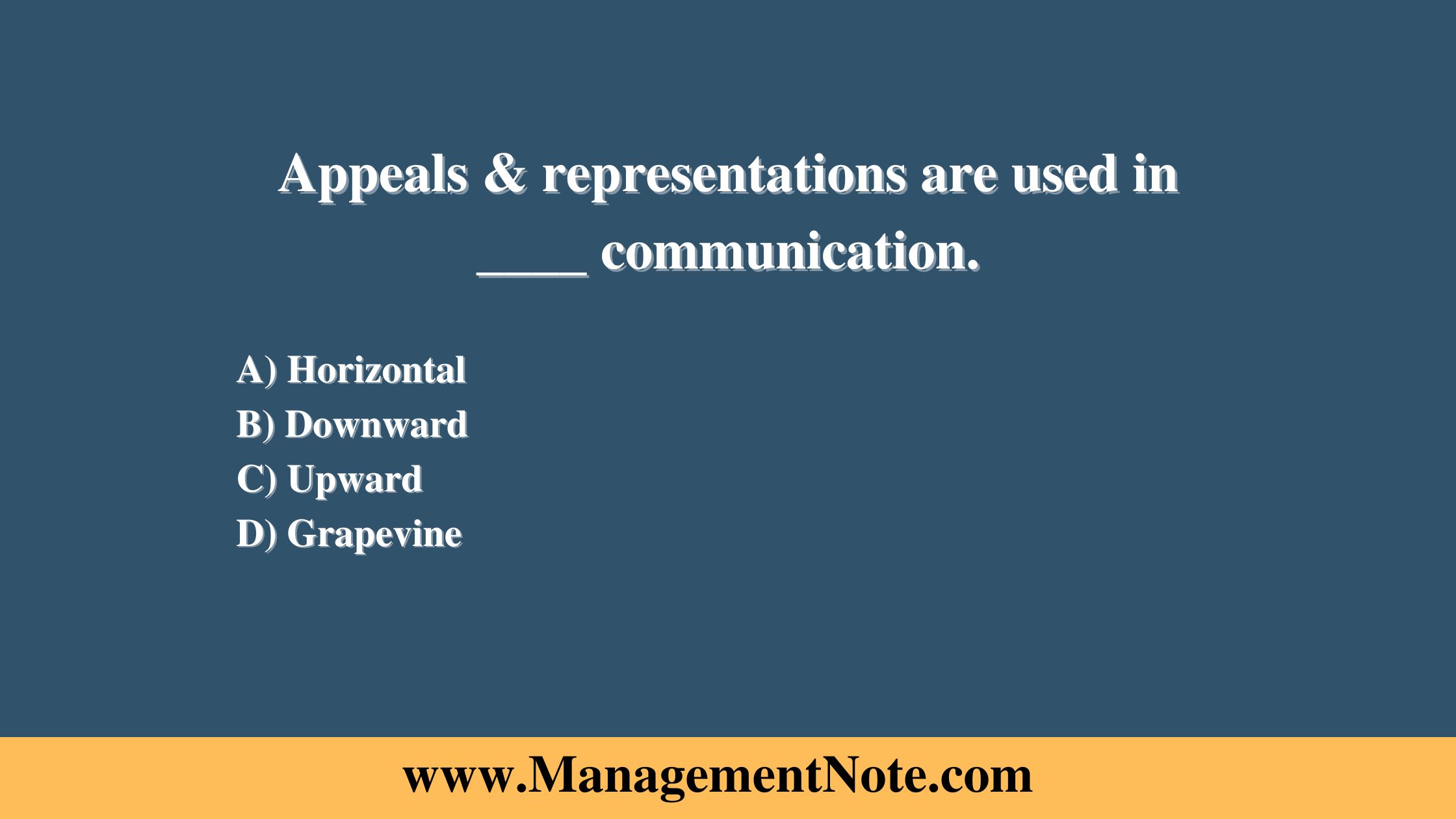Appeals & representations are used in ____ communication.
Options:
- A) Horizontal
- B) Downward
- C) Upward
- D) Grapevine
The Correct Answer Is:
- C) Upward
Answer Explanation:
Appeals and representations are important components of organizational communication, particularly in the context of conveying feedback, concerns, or requests within the hierarchical structure of an organization.
These terms are primarily associated with upward communication, which is the flow of information from subordinates or lower levels of an organization to superiors or higher levels.
Let’s delve into the details of why “C) Upward” is the correct answer, and then explore why the other options (A) Horizontal, (B) Downward, and (D) Grapevine are not accurate in this context.
Correct Answer: C) Upward
Upward communication refers to the transmission of information, ideas, feedback, suggestions, or concerns from employees, team members, or subordinates to their supervisors, managers, or higher-level executives within an organization.
Appeals and representations often fall under this category because they involve employees or subordinates making requests, raising grievances, or presenting their viewpoints to their superiors. Here’s a detailed explanation of why upward communication is the correct choice:
- Purpose of Appeals and Representations: Appeals and representations are typically made by employees to communicate their needs, concerns, or requests to higher-level management. This form of communication is essential for addressing issues, seeking redressal, or influencing decision-making processes within the organization.
- Hierarchy in Upward Communication: Upward communication aligns with the hierarchical structure of an organization. Employees report to supervisors, who report to managers, and so on. When employees have appeals or representations, they communicate these upwards through the established chain of command.
- Feedback Mechanism: Upward communication serves as a feedback mechanism. It allows lower-level employees to provide input and feedback to higher-ups, which can inform decision-making and policy changes. For instance, an employee may appeal for a change in workplace policies or represent a safety concern to their supervisor.
- Decision-Making Influence: Appeals and representations are often made with the intention of influencing decisions. Employees may provide reasoning and arguments to persuade their superiors to consider their requests favorably. This makes upward communication a crucial channel for employees to participate in decision-making processes.
Now, let’s examine why the other options are not correct:
A) Horizontal
Horizontal communication pertains to interactions and exchanges of information that occur at the same hierarchical level within an organization. It involves colleagues, peers, or departments of similar rank communicating with each other.
Appeals and representations are not typically associated with horizontal communication because they involve communication from lower levels to higher levels in the hierarchy, rather than between peers or colleagues.
B) Downward
Downward communication, as the name suggests, involves the flow of information from higher-level management to lower-level employees. It is often used for disseminating instructions, guidelines, policies, and feedback from superiors to subordinates.
Appeals and representations are not part of downward communication because they represent the opposite flow of information—from lower levels to higher levels in the organizational hierarchy.
D) Grapevine
The grapevine is a colloquial term used to describe informal, unofficial, and often gossip-based communication within an organization. It consists of rumors, speculations, and unverified information that spreads among employees through informal channels.
Appeals and representations are not part of the grapevine because they are formal, structured forms of communication that are intended to address specific issues or concerns through official channels. Grapevine communication lacks the structured nature and purposeful intent of appeals and representations.
In conclusion, appeals and representations are integral components of upward communication within organizations. They serve the purpose of allowing employees to communicate their concerns, requests, and feedback to higher-level management.
This form of communication is essential for maintaining a healthy organizational environment, promoting employee engagement, and ensuring that employee voices are heard in decision-making processes.
Horizontal, downward, and grapevine communication, on the other hand, serve different purposes and involve different flows of information within the organizational structure, making them inappropriate choices in the context of appeals and representations.

